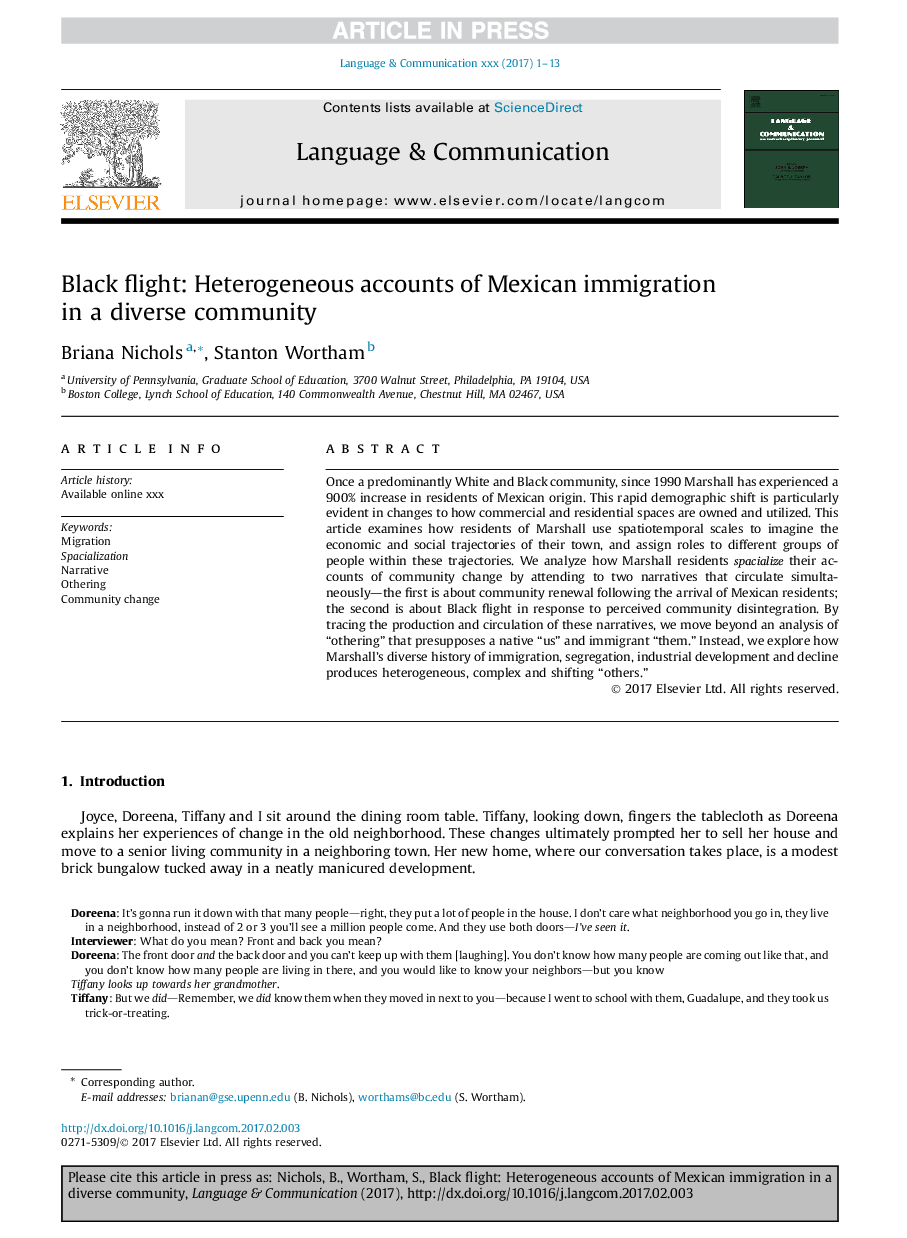| Article ID | Journal | Published Year | Pages | File Type |
|---|---|---|---|---|
| 7298261 | Language & Communication | 2018 | 13 Pages |
Abstract
Once a predominantly White and Black community, since 1990 Marshall has experienced a 900% increase in residents of Mexican origin. This rapid demographic shift is particularly evident in changes to how commercial and residential spaces are owned and utilized. This article examines how residents of Marshall use spatiotemporal scales to imagine the economic and social trajectories of their town, and assign roles to different groups of people within these trajectories. We analyze how Marshall residents spacialize their accounts of community change by attending to two narratives that circulate simultaneously-the first is about community renewal following the arrival of Mexican residents; the second is about Black flight in response to perceived community disintegration. By tracing the production and circulation of these narratives, we move beyond an analysis of “othering” that presupposes a native “us” and immigrant “them.” Instead, we explore how Marshall's diverse history of immigration, segregation, industrial development and decline produces heterogeneous, complex and shifting “others.”
Related Topics
Social Sciences and Humanities
Arts and Humanities
Language and Linguistics
Authors
Briana Nichols, Stanton Wortham,
